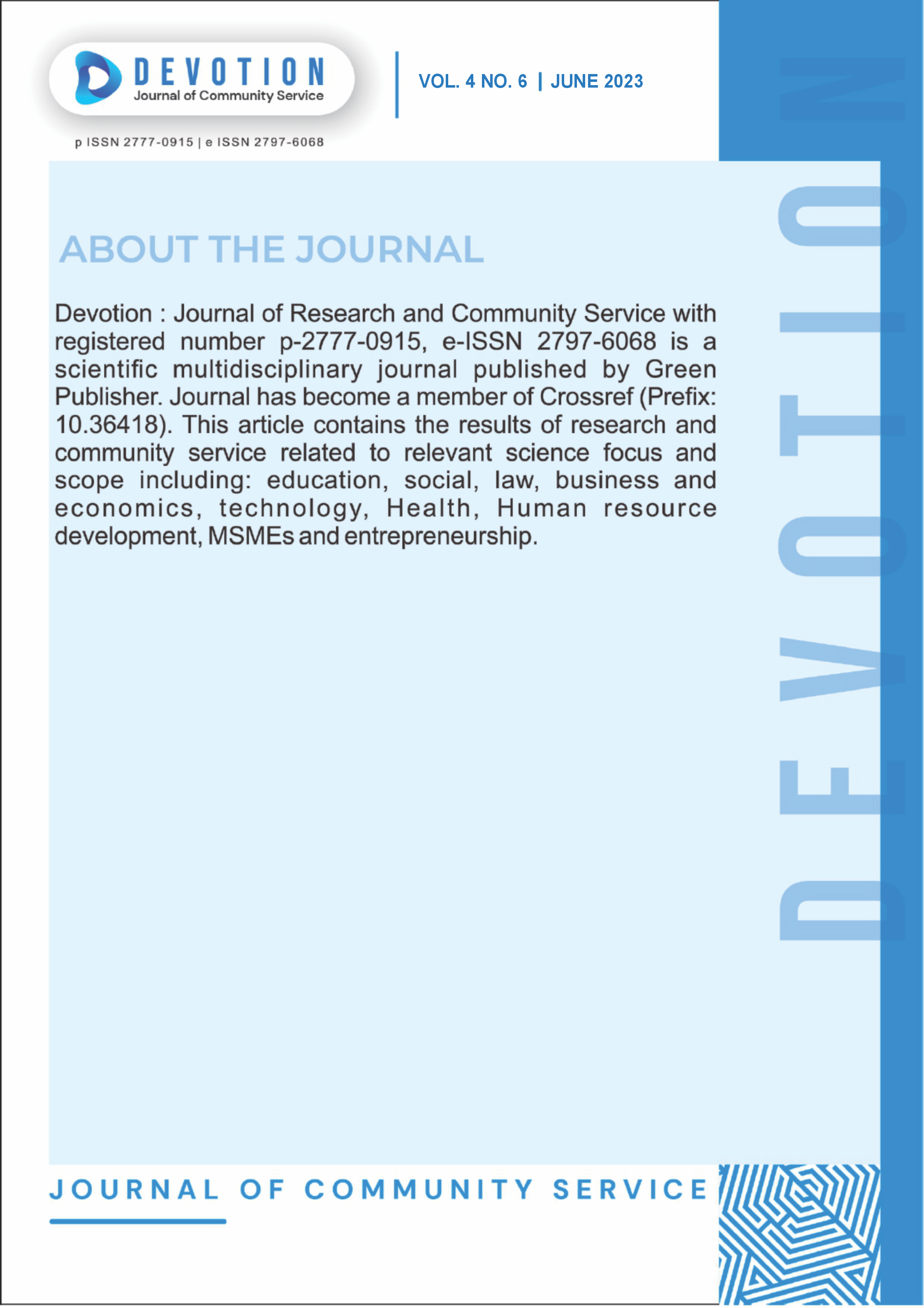Effect of Different Solvent on The Antioxidant Capacity of Bidara Leaves Extract (Ziziphus Spina-Christi)
DOI:
https://doi.org/10.59188/devotion.v4i6.483Keywords:
Antioxidant; bidara leaves; drying method; macerationAbstract
Bidara leaves (Ziziphus spina-christi) contains secondary metabolites such as flavonoids, polyphenols, saponins, triterpenoids and tannins which can be a source of antioxidants. In Indonesia, bidara leaves are used as herbal medicine by boiling fresh leaves. The products that developed from bidara leaves are health supplements and herbal teas from bidara leaves, but scientific studies about the antioxidant compounds of bidara leaves are still limited. There are antioxidant components that are non-polar, semi-polar or polar. This study examines the polarity of antioxidant compounds in bidara leaves. In this study, bidara leaves dried with a fluidized bed dryer had better chemical and physical characteristics. The results of the extraction by using various solvents (water, ethanol, ethyl acetate, and hexane) with maceration method showed that the highest antioxidant capacity was in the ethanol fraction (p<0.05). These results were measured based on the antioxidant activity parameters that DPPH scavenging, FRAP values, total phenolic, and total flavonoids. These results indicate that most of antioxidant compounds in bidara leaves have high polarity.
Published
Issue
Section
License
Copyright (c) 2023 Azzahra Putri Rialdi, Endang Prangdimurti, Saraswati Saraswati

This work is licensed under a Creative Commons Attribution-ShareAlike 4.0 International License.
Authors who publish with this journal agree to the following terms:
- Authors retain copyright and grant the journal right of first publication with the work simultaneously licensed under a Creative Commons Attribution-ShareAlike 4.0 International. that allows others to share the work with an acknowledgement of the work's authorship and initial publication in this journal.
- Authors are able to enter into separate, additional contractual arrangements for the non-exclusive distribution of the journal's published version of the work (e.g., post it to an institutional repository or publish it in a book), with an acknowledgement of its initial publication in this journal.
- Authors are permitted and encouraged to post their work online (e.g., in institutional repositories or on their website) prior to and during the submission process, as it can lead to productive exchanges, as well as earlier and greater citation of published work.













